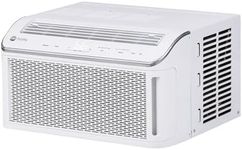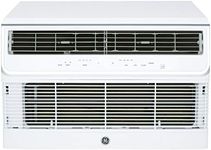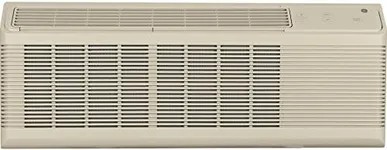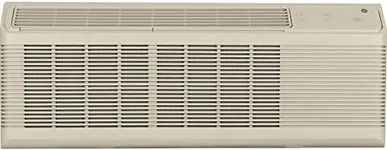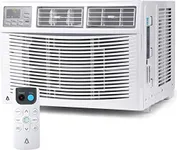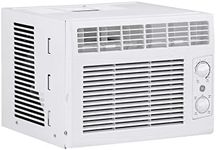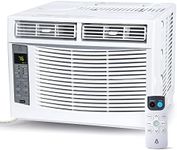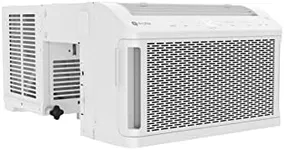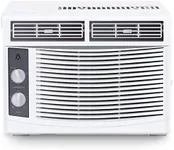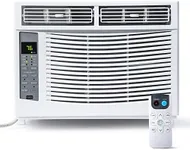Buying Guide for the Best GE Wall Air Conditioners
When choosing a wall air conditioner, it's important to consider several key specifications to ensure you get the best fit for your needs. Wall air conditioners are a great option for cooling specific rooms or areas without the need for extensive ductwork. Understanding the different features and specifications will help you make an informed decision and ensure your comfort during hot weather.Cooling Capacity (BTU)Cooling capacity, measured in British Thermal Units (BTU), indicates how much heat the air conditioner can remove from a room per hour. This is crucial because it determines the size of the room the unit can effectively cool. Units with lower BTU ratings (5,000-8,000 BTU) are suitable for small rooms up to 350 square feet, while higher BTU ratings (10,000-14,000 BTU) can cool larger spaces up to 700 square feet. To pick the right one, consider the size of the room you need to cool and choose a unit with an appropriate BTU rating.
Energy Efficiency Ratio (EER)The Energy Efficiency Ratio (EER) measures the efficiency of the air conditioner. It is calculated by dividing the BTU rating by the power consumption in watts. A higher EER indicates a more efficient unit, which can save you money on energy bills. EER values typically range from 8 to 12. If you prioritize energy savings, look for units with higher EER ratings. Consider your usage patterns and how much you value energy efficiency when making your choice.
Noise LevelNoise level is an important factor, especially if the air conditioner will be installed in a bedroom or living area. Noise levels are measured in decibels (dB), and lower values indicate quieter operation. Units typically range from 50 to 60 dB. If you are sensitive to noise or plan to use the air conditioner in a quiet environment, opt for a unit with a lower noise level. Consider where the unit will be placed and how much noise you can tolerate.
Installation TypeWall air conditioners can be installed through the wall or in a window. Through-the-wall units require a sleeve and are more permanent, while window units are easier to install and remove. The installation type affects the ease of setup and the aesthetics of your room. If you prefer a more permanent solution and have the necessary space, a through-the-wall unit might be ideal. If you need flexibility or have a suitable window, a window unit could be a better choice.
Additional FeaturesModern wall air conditioners come with various additional features such as remote control, programmable timers, sleep modes, and air purifiers. These features can enhance convenience and comfort. Remote control allows easy operation from a distance, timers can help save energy, sleep modes adjust settings for nighttime comfort, and air purifiers improve air quality. Consider which features are important to you and how they can improve your overall experience with the air conditioner.
